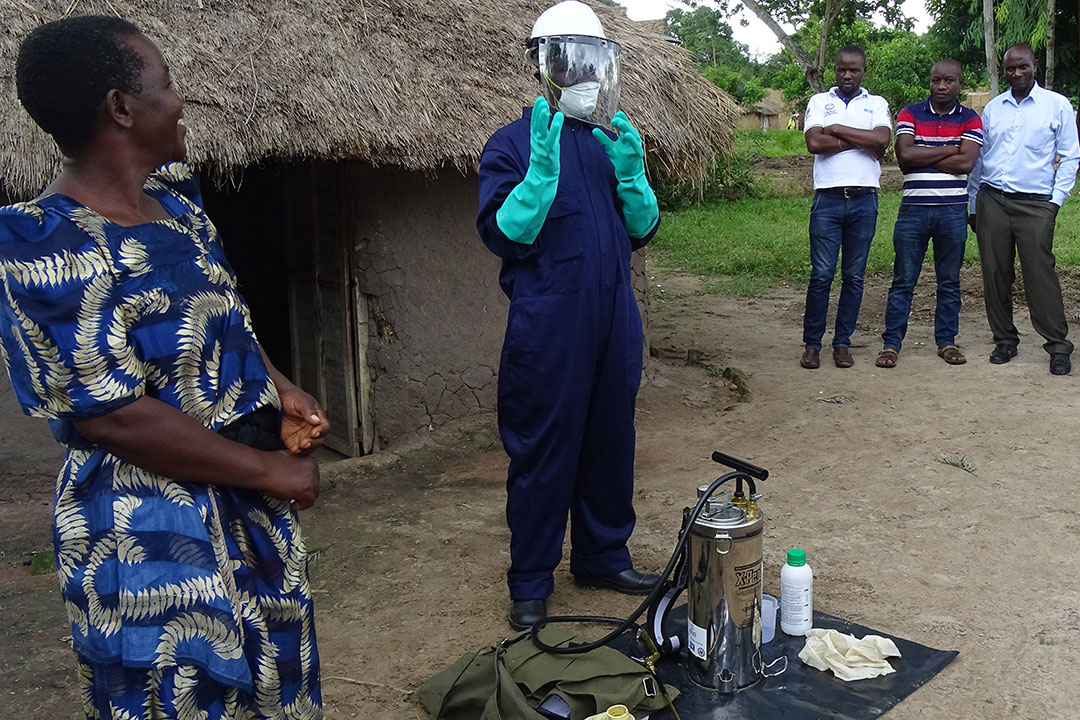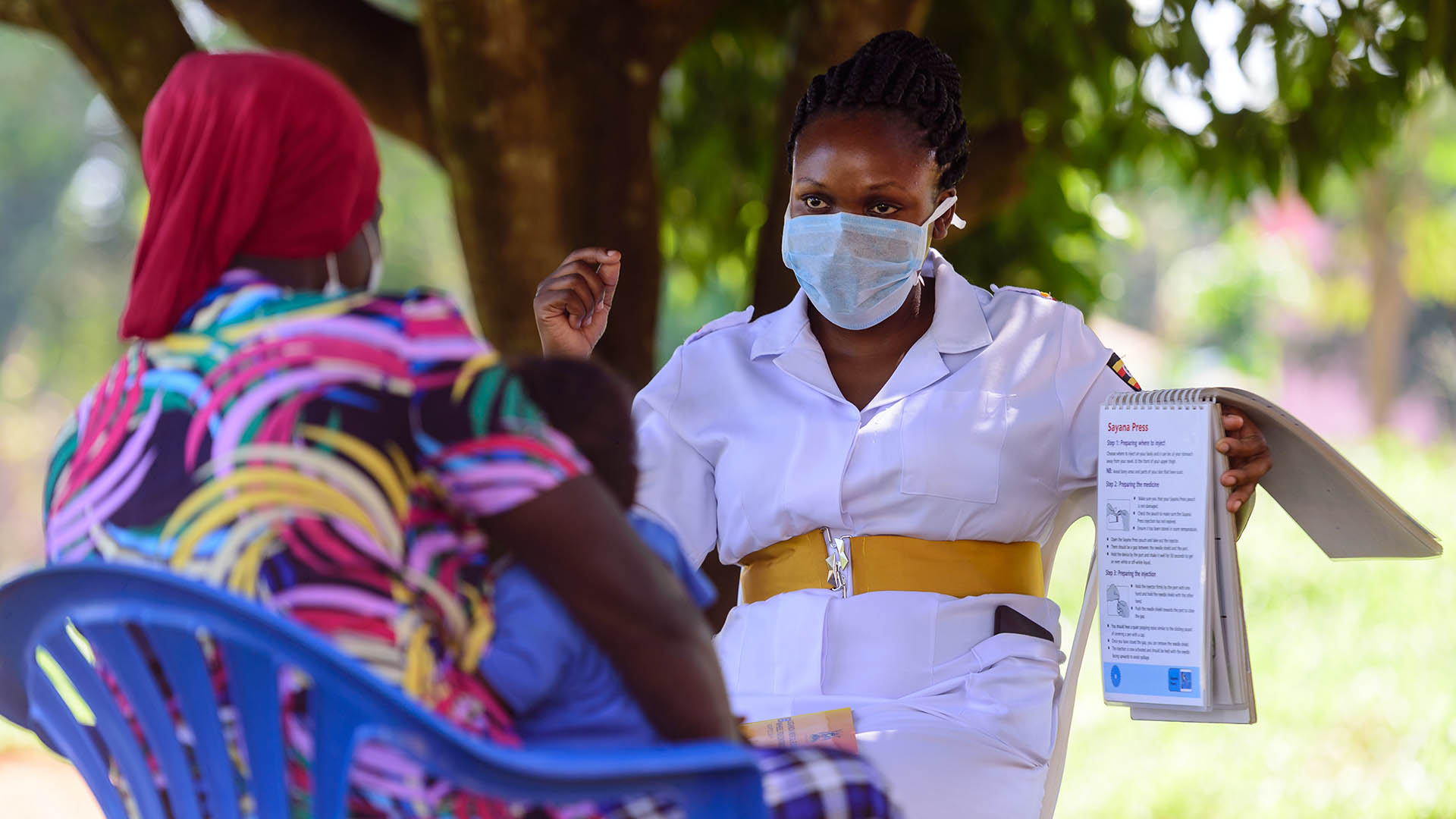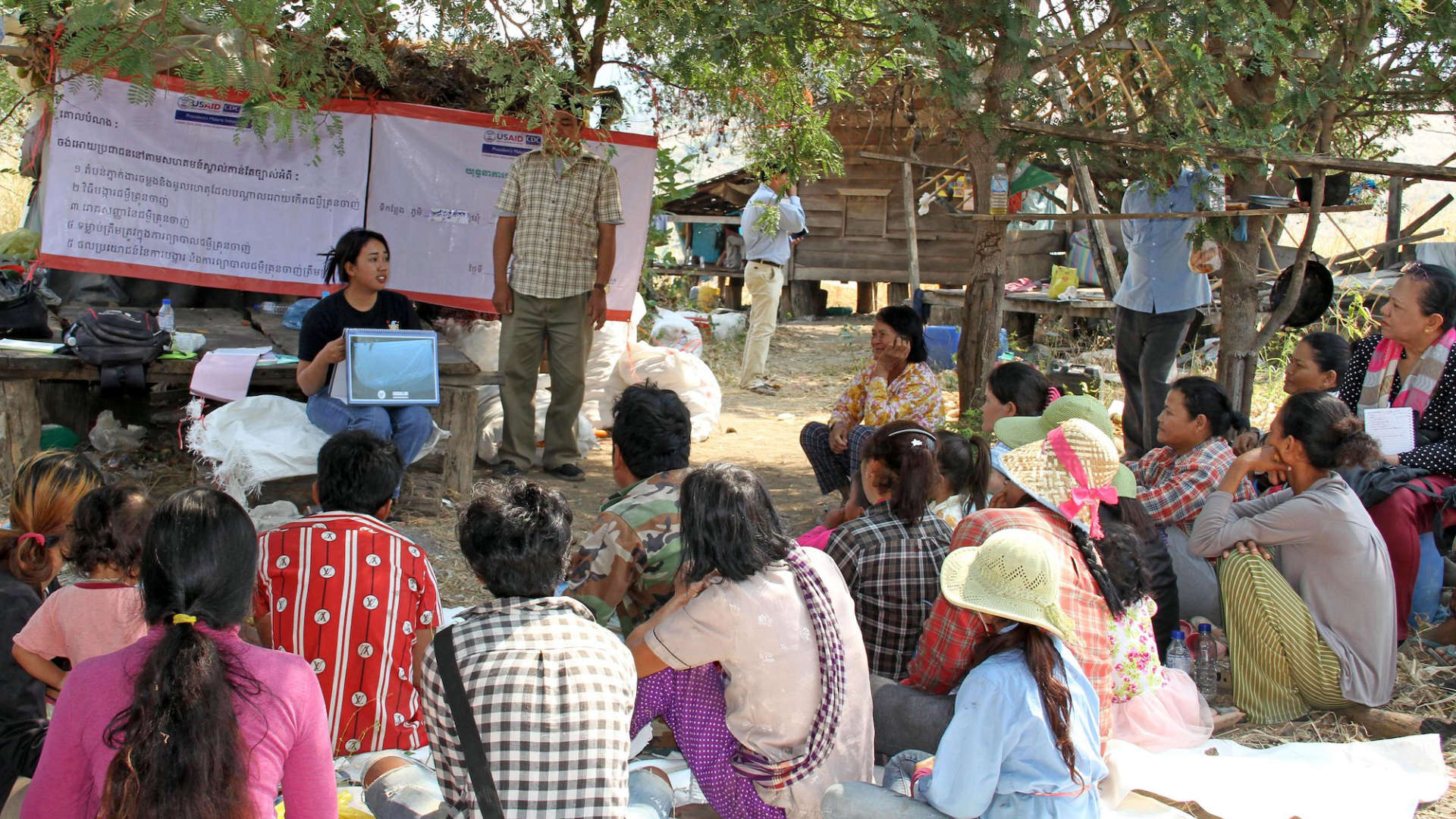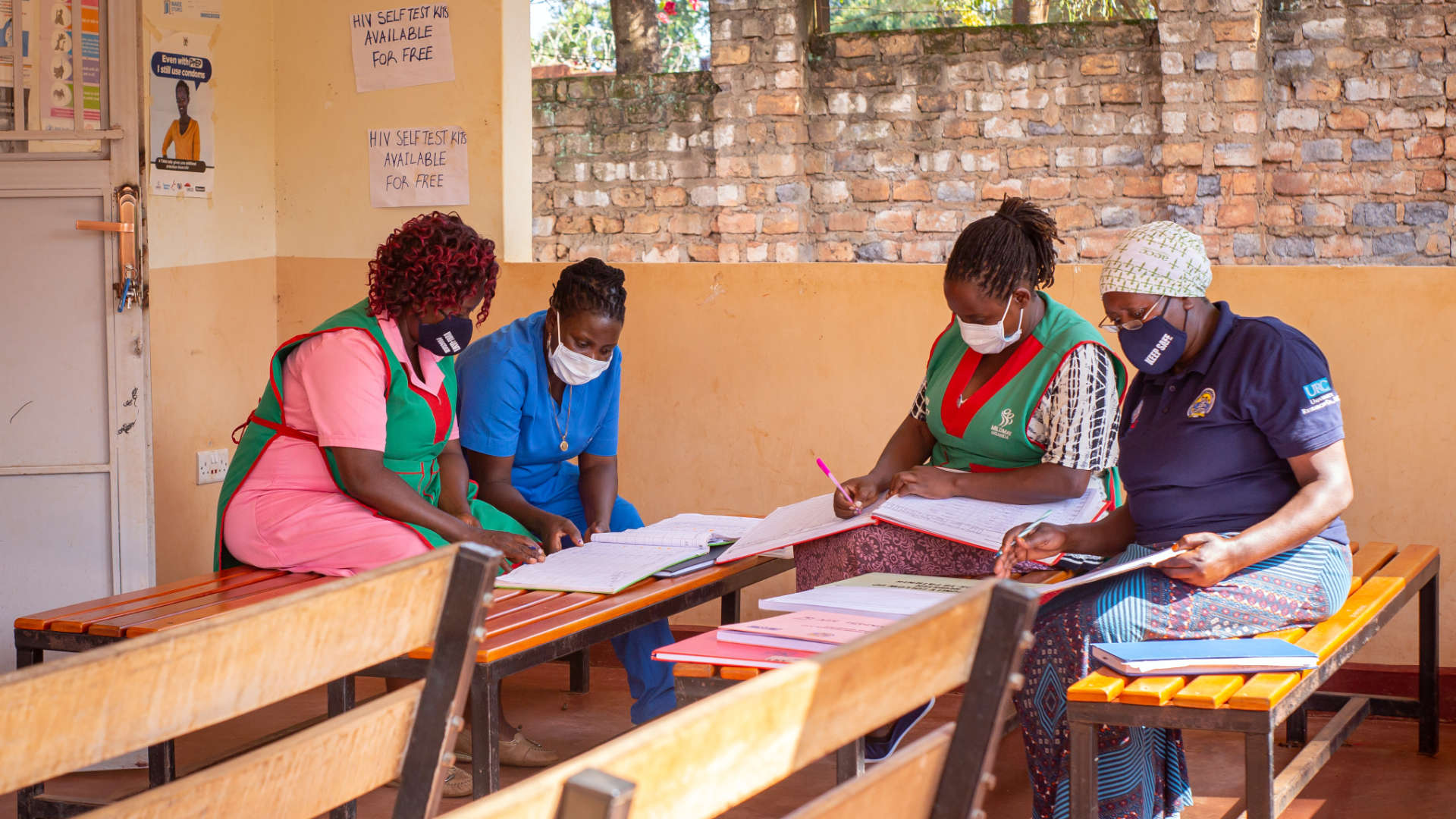Rose, a wife and mother of six, was concerned about the frequent malaria episodes her 4-year-old child had experienced during the past six months.
As a village community worker in Bukyasinko Village, she was aware that malaria is the leading cause of death among children under five years of age. Therefore, she faithfully followed her own guidance to community members and cleared bushes around her home, removed mosquito breeding sites, and had her family sleep under long-lasting insecticidal nets. Unfortunately, this was not enough to reduce her child’s repeated malaria infections.
A team of community health workers supported by the USAID Regional Health Integration to Enhance Services in East Central Uganda (RHITES-EC) Activity conducted a community dialogue to inform residents of her village about indoor residual spraying (IRS) and how it can help reduce incidents of malaria. Rose had been unaware that the grass-thatched roof of her house was a hiding place for mosquitoes. It became clear to her that IRS could reduce her child’s frequent malaria episodes and she supported efforts to introduce IRS in her community.
According to the World Health Organization (WHO), pregnant women and children under five are the most vulnerable group affected by malaria. The WHO recommends the use of vector control (insecticide-treated nets and/or IRS) and preventive antimalarial medicines to protect pregnant women and children.
Preparing the Community for Spraying of Houses
While many IRS teams experience community resistance because of fears about possible IRS side effects, the RHITES-EC-supported teams addressed these fears during community discussions. The teams conducted follow-up sessions to find out if any community members had experienced side effects from the IRS.
“In Bugiri District there was no resistance to indoor residual spraying by community members due to community mobilization and community involvement in finding solutions to existing barriers to indoor residual spraying,” confirmed a Bugiri Hospital health assistant.
As part of the IRS efforts, USAID RHITES-EC requested that those with brick houses not paint their houses before the residual spraying. And they asked that those residing in mud and wattle houses not apply cow dung to the walls and floors of their homes (used to make the surfaces smooth and neat) as these practices dilute the effects of IRS.
“We were told to remove all our belongings from the house prior to the spraying and we also stopped smearing the mud walls and floors of our home with cow dung,” said Rose.
Following community dialogues and radio campaigns, a partner organization, the U.S. President’s Malaria Initiative (PMI) VectorLink Project, carried out IRS in Nabukalu Village as well as in other nearby villages in high-burden areas.
IRS Produces Significant Results
“As a result of IRS, we have noticed a marked reduction in the number of mosquitoes in our house at night and my child is no longer getting malaria,” Rose said. Every home is re-sprayed annually, which the community now welcomes due to the positive results. “When I visit homes during my community health rounds, villagers ask me about the IRS schedule because they are looking forward to having their homes sprayed,” adds Rose.
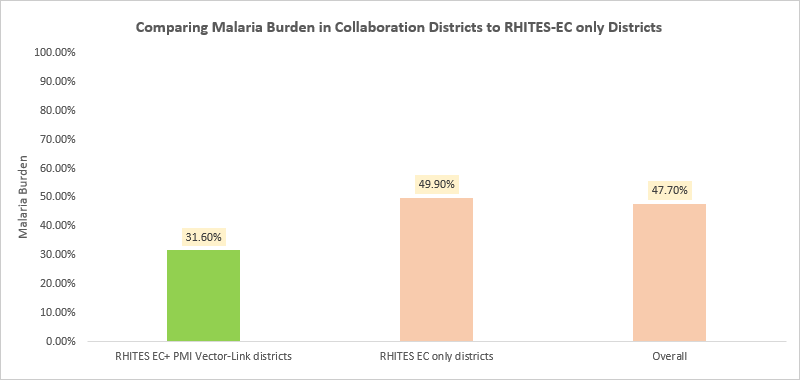
USAID RHITES EC and PMI VectorLink collaborate to deliver IRS in the two districts of Bugiri and Namutumba with other malaria control interventions. As of January to March 2020, the malaria prevalence averaged 31.6% in Bugiri and Namutumba, compared with 49.9% in 10 districts that use malaria control interventions without IRS. While IRS is not within the mandate of RHITES EC, the partnership with PMI VectorLink, has yielded remarkable results.
